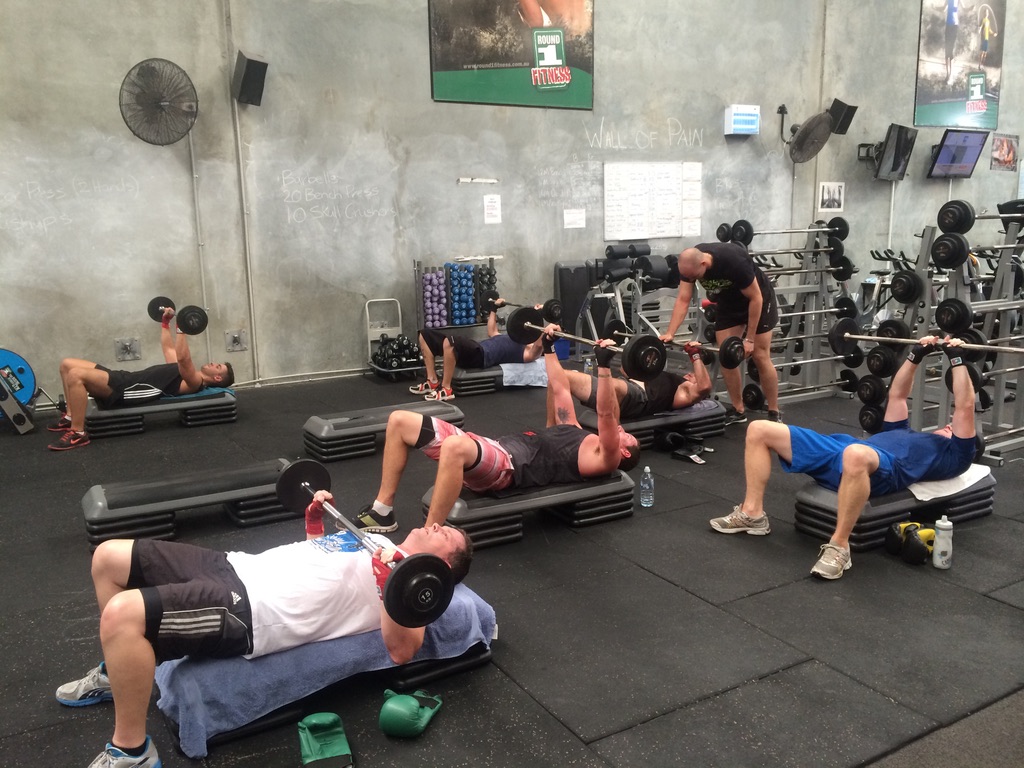Hey Team,
Thanks as always to everyone who made it down to the gym last week. We are approaching the end of our current strength block over in the Strength gym and those weights are (or they damn well should be!!!) getting H-E-A-V-Y! If there is a number you are chasing, be sure to chat to the coaches before the session so they can help plan out your progression for that day! Over in boxing, the September training block is going so well – as I noted last week, as we settle in to the new gym configuration (there are still some things to come – hopefully the new power ropes arrive this week so I can get them re-integrated into the sessions!) I am really trying to add some more structure to the plans across each month…I mean, I always have done that in terms of what exercises we do but I guess I mean more in terms of ‘how long each round is, using the mini-circuits, ensuring a challenge (bike/row/ski), use of partner sessions etc.” Anyway, I’ve planned the blocks out all the way through to the end of 2025 (you can’t change a plan until you have a plan!) so be sure to let me know how you’re finding it – and whether we’re doing the same stuff “too much” or you’re not getting enough of “something”…
Of course, we’re all coming along to the gym and understand that exercise is crucial for long-term health – and many of you guys really are crushing it in the gym—whether that means smashing through the BoxPlus sessions or lifting your way to new personal bests over in Funky. But, as I’ve been chatting with many new faces lately, it’s clear there’s a piece of the puzzle we’re often missing: what happens in the other 23 hours of the day?
Let’s face it, even if you’re hitting the gym consistently, spending the rest of the day sitting at a desk then crashing in front of the TV each night isn’t going to get you closer to your goals. That’s why I’m encouraging all of you to up your incidental exercise by at least 10%. This could be as simple as increasing your daily step count to hit a minimum of 10,000 steps. Yes, that’s right—minimum, not target.
The Science Behind 10,000 Steps
While there’s nothing magical about the number 10,000, it’s a solid benchmark for staying active throughout the day. Walking is one of the easiest and most accessible forms of movement—it’s free, low-impact, and you can do it almost anywhere. In fact, studies show that increasing your daily steps can significantly improve your health. In this modern age, it’s also the easiest one to count – even if you’re like me and don’t want a watch that records ‘personal data’, just leaving your phone in your pocket will give you a number (which will be a solid estimate at worst) of how many steps you’ve taken that day.
Now I wanted to try and back all of this incidental exercise rhetoric with ‘something’….to be fair, it’s hard to find ‘rock solid’ case studies but one thing I found was a study published in the JAMA Internal Medicine journal in 2019 found that women who took just 4,400 steps per day had a lower mortality rate compared to those who walked fewer than 2,700 steps. While the benefits plateaued around 7,500 steps, it demonstrates the positive impact of simply moving more. So, by aiming for at least 10,000 steps, you’ll be well on your way to establishing positive habits that will improve your long-term health.
The Risks of Sitting Too Much—And How It Affects Your Back
While increasing your step count can improve your overall health, it will also have the impact of reducing the time you spend sitting – and this can have a direct impact on your lumbar health. Sitting for long periods puts a lot of pressure on your lower back, particularly on the discs in your lumbar spine, which can lead to stiffness, discomfort, and even chronic pain over time.
Research shows that prolonged sitting weakens the muscles in your lower back and reduces the natural curvature of your spine, which can increase the risk of developing conditions like lumbar disc herniation or lower back pain. By standing up and moving more frequently throughout the day, you’re giving your lower back muscles a break and allowing them to stay active and strong.
10,000 Steps: The Minimum, Not The Goal
Let’s be clear—10,000 steps is your baseline, not the end goal. If you’re reaching 10,000 steps every day, fantastic! But that’s where the challenge starts, not where it ends. This is about building a consistent habit of movement into your life, one that pushes you beyond sitting all day.
Think of it this way: if you’re getting home at the end of the day and you haven’t hit your 10,000 steps yet, what’s your move? Are you going to shrug it off and say, “close enough”? Or are you going to grab your shoes and head out for an after-dinner walk? (And hey, if the weather’s bad, we can be reasonable—but when it’s good, no excuses!)
That after-dinner walk isn’t just about racking up the steps—it’s about showing up for yourself, day in and day out. It’s about taking control of your health and making the choice to move, even when it would be easier not to. Plus, that extra walk is a great way to unwind, boost digestion, and clear your head before bed.
Simple Ways to Boost Your Steps
I get it, the idea of squeezing in more movement can feel overwhelming with a busy schedule. But it doesn’t have to be complicated! Here are some easy ways to start building up your incidental exercise:
- Park further away: When you’re out running errands, park at the far end of the lot. Those extra steps will add up quickly.
- Walk while the kids play: If you’re at your child’s sporting practice or game, rather than sitting in the bleachers, walk around the field or court. You can still cheer them on while staying active.
- Take the stairs: Skip the elevator or escalator when you can. If you’re looking at less than four flights of stairs, take the stairs instead.
- Make your meetings mobile: If you have phone calls or Zoom meetings where you don’t need to be on camera, turn them into walking meetings. Pace around your office or home instead of sitting at a desk.
- Schedule mini walking breaks: Set a timer to remind yourself to take a quick five-minute walk every hour. It could be just around your office or home, but it’ll help break up long periods of sitting.
Take On The Challenge: Don’t Let 10,000 Be The Ceiling!
10,000 steps is where we start, not where we finish. Can you push it further? If you’ve already knocked out 10,000 by mid-afternoon, fantastic—why not challenge yourself to hit 12,000 or 15,000? Every extra bit of movement adds up to a stronger, healthier you.
And on those days when the steps just aren’t there yet, challenge yourself to get out and finish strong. Whether it’s an after-dinner walk, pacing while on a call, or just some extra movement around the house—commit to hitting those steps. Not for anyone else, but for yourself.
Let’s get moving—and make every step count!
See you in the gym,
Michael.


